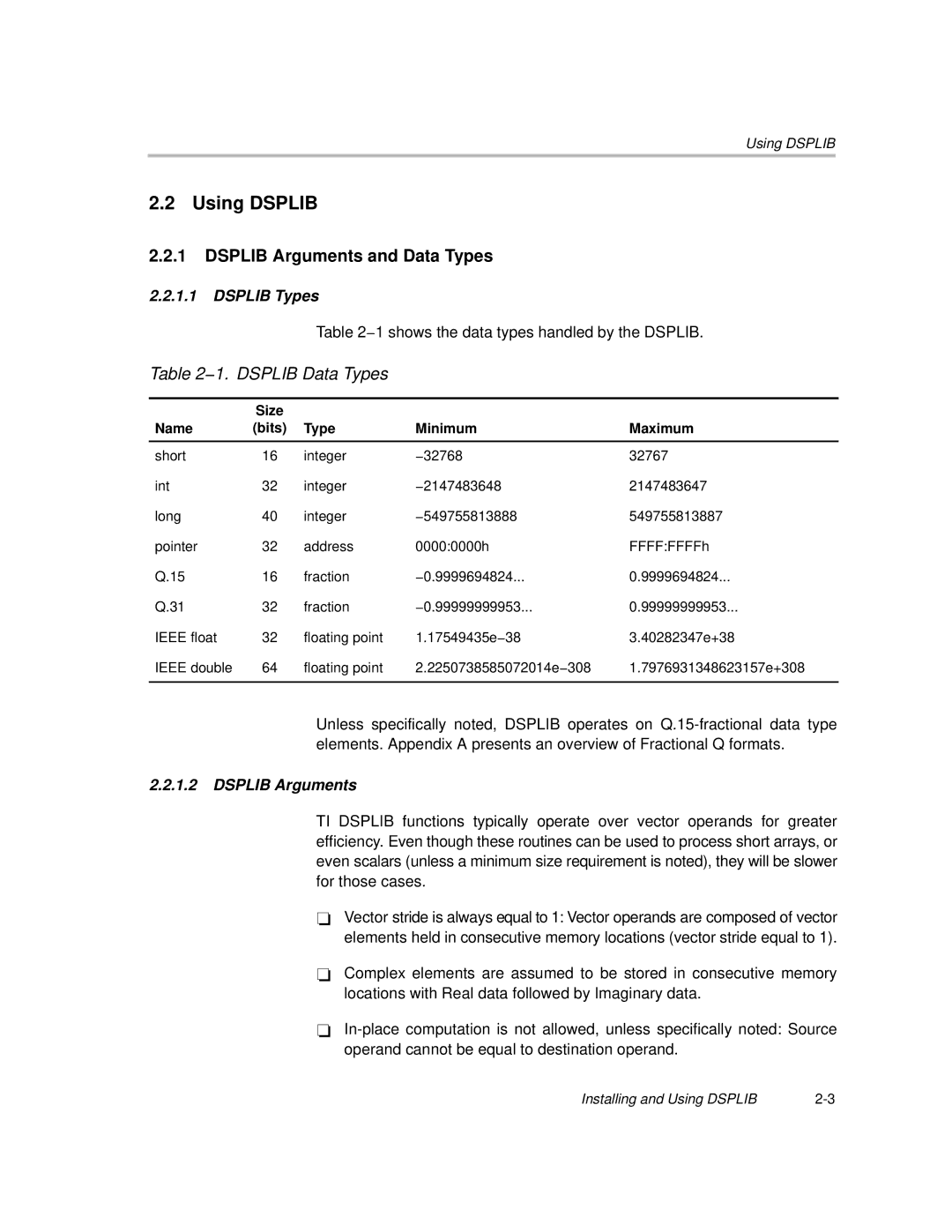
Using DSPLIB
2.2 Using DSPLIB
2.2.1DSPLIB Arguments and Data Types
2.2.1.1DSPLIB Types
Table 2−1 shows the data types handled by the DSPLIB.
Table 2−1. DSPLIB Data Types
| Size |
|
|
|
Name | (bits) | Type | Minimum | Maximum |
|
|
|
|
|
short | 16 | integer | −32768 | 32767 |
int | 32 | integer | −2147483648 | 2147483647 |
long | 40 | integer | −549755813888 | 549755813887 |
pointer | 32 | address | 0000:0000h | FFFF:FFFFh |
Q.15 | 16 | fraction | −0.9999694824... | 0.9999694824... |
Q.31 | 32 | fraction | −0.99999999953... | 0.99999999953... |
IEEE float | 32 | floating point | 1.17549435e−38 | 3.40282347e+38 |
IEEE double | 64 | floating point | 2.2250738585072014e−308 | 1.7976931348623157e+308 |
|
|
|
|
|
Unless specifically noted, DSPLIB operates on
2.2.1.2DSPLIB Arguments
TI DSPLIB functions typically operate over vector operands for greater efficiency. Even though these routines can be used to process short arrays, or even scalars (unless a minimum size requirement is noted), they will be slower for those cases.
-Vector stride is always equal to 1: Vector operands are composed of vector elements held in consecutive memory locations (vector stride equal to 1).
-Complex elements are assumed to be stored in consecutive memory locations with Real data followed by Imaginary data.
-
Installing and Using DSPLIB |
